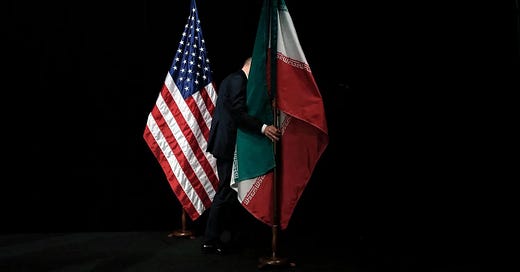A rare breakthrough for US-Iran relations
How a prisoner swap deal could revive diplomacy and prevent war between the US and Iran
The US and Iran have reached an agreement to free five imprisoned Americans in exchange for several jailed Iranians and the unfreezing of about $6 billion in Iranian oil revenue, according to the New York Times. This is a welcome and hopeful development that could pave the way for more dialogue and cooperation between the two sides.
The deal
The New York Times reports that the deal was reached after more than two years of secret negotiations between US and Iranian officials, facilitated by intermediaries from Oman, Switzerland, and Qatar. The deal involves the following elements:
Iran has released into house arrest five Iranian American dual citizens, who had been imprisoned on unsubstantiated charges of spying. They are Siamak Namazi, a businessman; Emad Shargi, an entrepreneur; Morad Tahbaz, an environmentalist; and two others whose names have not been disclosed.
The US will release a handful of Iranian nationals serving prison sentences for violating sanctions on Iran. The names and details of these prisoners have not been revealed yet.
South Korea will release nearly $6 billion in Iranian funds that were frozen in its banks due to US sanctions. The money will be transferred to Qatar and will only be available to Iran for humanitarian purchases, such as food, medicine, and vaccines.
The deal comes at a time when the Persian Gulf is on edge and the US has deployed more troops to the region. It shows a sign of pragmatism from both sides that has been missing for years. The money will help Iran cope with its debilitating economic crisis largely stemming from US sanctions. The prisoners will reunite with their families and end their year-long nightmarish ordeal.
The context
This deal is a welcome change from the destructive cycle of escalation that has plagued the two countries since Trump withdrew from the 2015 nuclear deal. The US has inflicted harsh economic sanctions that have hurt ordinary Iranians. Iran’s government has retaliated by expanding its nuclear program and launching attacks in the region against US forces, interests, and allies.
Biden has not yet fulfilled his campaign promise to revive the 2015 deal, and has maintained Trump’s failed approach. He came into office demanding that Iran return to full compliance with the deal before lifting any sanctions. Iran at the time insisted that the US lift all sanctions before returning to the deal. Both sides have been stuck in a stalemate that has only increased the risk of war.
But now, Biden has taken a bold step that could open the door for more dialogue and cooperation. He has shown that he is willing to make concessions and engage with Iran on other issues besides the nuclear one. He has also shown that he can resist the pressure from pro-war forces in Washington, Tel Aviv, and Riyadh, who have been trying to sabotage any diplomatic efforts with Iran.
The implications
We should not underestimate how close the US and Iran have been to war. They have no direct communication, and tensions have been escalating, especially in recent months with mutual tanker seizures by both sides. The hawks will now attack Biden and accuse him of appeasement and paying ransom to Iran. Hardliners in Washington, Tehran, and Tel Aviv will try their best to derail this deal’s implementation.
According to the NYT, while the five detained US citizens have been released from prison to a hotel, they won’t be allowed to leave the country until the Iranian money gets to Qatar, which could take four to six weeks. A lot could happen in this timeframe.
This deal is not a formal agreement, but rather an understanding that could be easily reversed or disrupted by external or internal factors. It is also not a substitute for a comprehensive and lasting solution to the nuclear issue, which remains the core of the US-Iran dispute. Both sides still need to reach some sort of agreement on the nuclear issue to address their mutual concerns and interests.
This deal is a rare opportunity for both sides to break the cycle of hostility and mistrust that has defined their relations for four decades. It is also a test of their political will and diplomatic skill to overcome the hurdles and difficulties that await them. It is a chance for both sides to prove that they are committed to breaking the cycle of escalation that has jeopardized both of their interests in recent years.
It is also a chance for all those who are proponents of peace and diplomacy to support this courageous move by Biden and this effort to de-escalate and get the US and Iran back on the path to peace, not war.




